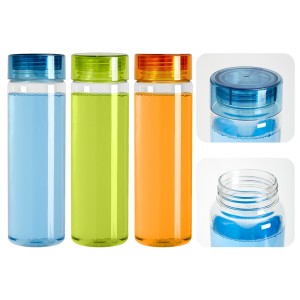Plastic bottles are common items in our daily lives and are used for various purposes such as filling water and storing condiments. However, the environmental impact of plastic bottles is a growing concern, leading many people to wonder how to recycle them and how many times they can be reused. In this article, we’ll explore the process of recycling plastic bottles and the potential for reuse multiple times.
Plastic bottles are typically made from polyethylene terephthalate (PET) or high-density polyethylene (HDPE), both of which are recyclable materials. The recycling process starts with collection, where used plastic bottles are collected and sorted according to resin type. After sorting, the bottles are washed to remove any contaminants such as labels, caps and remaining liquid. The clean bottles are then torn into small pieces and melted to form pellets that can be used to make new plastic products.
One of the most common questions about recycling plastic bottles is how many times they can be recycled. The answer to this question depends on the quality of the recycled material and the specific application. Generally speaking, PET bottles can be recycled multiple times, with some estimates suggesting they can go through 5-7 recycling processes before the material degrades and becomes unsuitable for further recycling. On the other hand, HDPE bottles are also typically recyclable multiple times, with some sources suggesting they can be recycled 10-20 times.
The ability to recycle plastic bottles multiple times is a major benefit to the environment. By reusing materials, we reduce the need for new plastic production, thereby saving natural resources and reducing energy consumption. Additionally, recycling plastic bottles helps divert waste from landfills and reduces the overall environmental impact of plastic consumption.
In addition to the environmental benefits, recycling plastic bottles also has economic advantages. Recycled materials can be used to make a variety of products, including new bottles, clothing, carpets and packaging. By incorporating recycled plastic into these products, manufacturers can reduce production costs and create a more sustainable supply chain.
Despite the potential for multiple recycling, the process still presents some challenges. One of the main concerns is the quality of recycled materials. Every time plastic is recycled, it undergoes a degradation process that affects its mechanical properties and performance. As a result, the quality of recycled materials may degrade over time, limiting their potential applications.
To address this challenge, ongoing research and development efforts are focused on improving the quality of recycled plastics. Innovations in recycling technology, such as advanced sorting and cleaning processes, as well as the development of new additives and blends, are helping to improve the performance of recycled plastics. These advances are crucial to expanding the potential for multiple recycling and increasing the range of products made from renewable plastics.
In addition to technological advancements, consumer education and behavioral changes are also important factors in maximizing the recycling potential of plastic bottles. Proper disposal and recycling practices, such as removing caps and labels before recycling, can help improve the quality of recycled materials. Additionally, choosing products made from recycled plastic and supporting companies that prioritize sustainability can create market demand for recycled materials, driving further innovation and investment in recycling infrastructure.
In summary, plastic bottles can be recycled multiple times, offering the potential for significant environmental and economic benefits. While the exact number of recycling cycles may vary based on plastic type and specific application, continued advances in recycling technology and consumer behavior are expanding the potential for reuse. By supporting recycling initiatives and choosing products made from recycled plastic, we can contribute to a more sustainable and circular economy and reduce the environmental impact of plastic consumption.
Post time: May-21-2024
